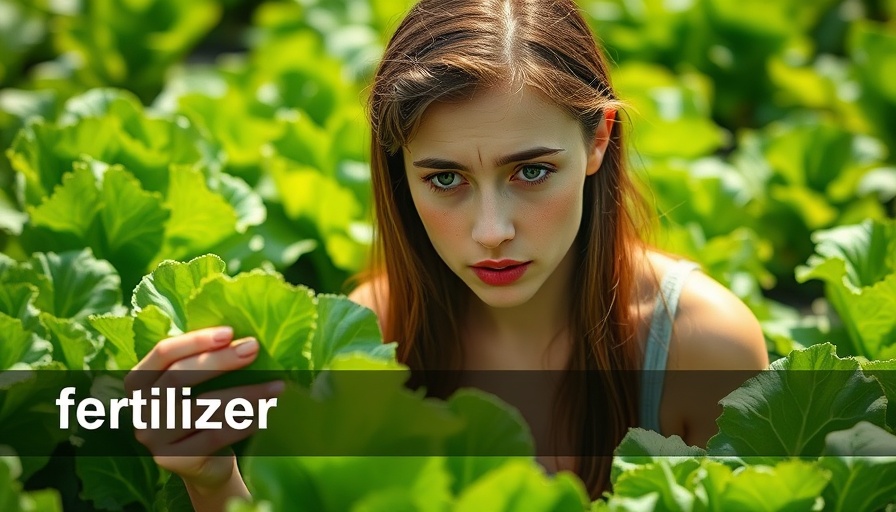
Understanding Your Garden: The Signs Your Plants Give You
As a gardener, deciphering what your plants need can feel like wandering through a maze. The question, "Does my garden need fertilizer?" often arises, and the answer might be simpler than you think. Your plants are constantly providing signals about their nutrition status. For instance, yellowing leaves can be indicative of nitrogen deficiency, while purple-tinged leaves may signal phosphorus issues. However, before rushing to apply fertilizers, it's essential to consider the broader picture of your garden's health.
In 'Stop Guessing! How to Know If Your Garden Needs Fertilizer,' the video discusses the indicators your plants tell you about their nutritional needs, inspiring us to explore these concepts further.
The Essential Role of Soil Health
The health of your soil is closely linked to your plant's health. It's vital to assess whether signs of nutrient deficiencies are systemic across multiple plants or isolated to a few. If several varieties show yellowing leaves, you might have low nitrogen levels in the soil. Conversely, if only one or two plants are affected, the issue could stem from environmental factors or root problems. Thus, understanding your garden's ecosystem is crucial before making fertilizer decisions.
Simple Tests to Determine Nutrient Needs
You don’t need expensive soil tests to evaluate nutrient deficiencies in your garden. For beginners, a simple vinegar test can identify calcium levels. Take a dry spoonful of soil, add a drop of vinegar, and observe: a fizz indicates high calcium carbonate content. If there's no fizz, the calcium may be present but locked in an unavailable form for your plants. This quick test can guide you on whether immediate action is needed.
Navigating Fertilizers: Organics vs. Synthetics
When it comes to fertilizing, striking a balance between organic and synthetic options is key. Synthetic fertilizers are effective at providing immediate nutrients but may lead to soil degradation if overused. A recent meta-analysis demonstrated that responsibly used synthetic fertilizers can enhance soil microbial life, but there remains a risk of over-application leading to nutrient leaching and soil acidification over time.
On the other hand, organic fertilizers improve soil structure and introduce essential micronutrients without the risk of leaching. They are slower to release nutrients, but their impact on soil health is profound. Ultimately, integrating both types allows gardeners to manage their plants' acute nutritional needs while preserving soil quality.
Practical Insights: How to Fertilize Smartly
For successful fertilization, consider an approach that combines compost top-dressing with occasional synthetic applications. For instance, apply an inch of compost or well-rotted manure to ensure that your plants have a slow and steady nutrient supply while using liquid synthetic fertilizers during your routine watering—which you should consider doing weekly.
Plant Care Beyond Fertilization
Your garden's vitality relies on more than just fertilization; it's about creating an environment where plants thrive. Ensure you provide the correct amount of sunlight, water, and space. Observing your plants can reveal a lot; if they’re struggling despite regular care, it could suggest deeper soil issues rather than nutrient lack.
Local Insights: Fertilization in the Okanagan
For gardeners in the Okanagan, it's essential to tailor fertilization practices to the unique conditions of the region. Factors such as soil types and climate can affect the efficacy of fertilizers. With vineyards, orchards, and diverse gardens, local growers can share experiences and adapt effective practices from one another to cultivate better understanding and health in the garden.
Final Thoughts: Engage with Your Garden
To initiate change in your gardening habits, keep in mind that understanding your plants and soil is fundamental. Keep experimenting, test your soil with simple methods, and adjust your care practices. As we see how our gardens respond to these efforts, we begin to appreciate the relationship between gardener and garden. Engage with fellow Okanagan gardeners, share your findings, and enhance your gardening journey!
Take these insights and start assessing your garden today; understanding the needs of your plants will foster a healthier ecosystem and a stunning garden.
 Add Row
Add Row  Add
Add 




Write A Comment